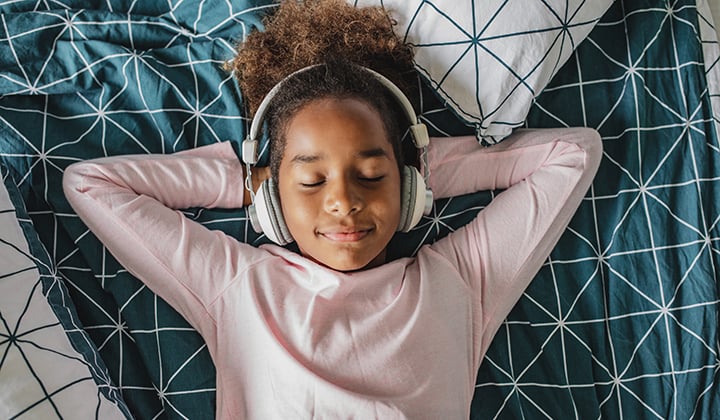
“Mom, can I PUH-LEEZE skip school and activities today?!” It’s the type of question that stops parents in their tracks. And once it’s posed, a million follow: is my child avoiding something? Is he sick? Is she having a hard time with friends or learning? Will this set them behind? What will people think? How will we manage our day?
Parents can take a deep breath: It’s healthy for kids to take a break from day-to-day life to rest and restore. One way to achieve this is to allow your child a wellness day. What is a wellness day? A wellness day, or mental health day, is taking a break from normal, daily activities to refresh and destress. The strain of academics, social lives and intense schedules can build up; children may need time at home to just be a kid.
What are some signs a child may need a wellness day?
Like adults, it’s typical for kids to have varying moods and behaviors. Reflect on how your child generally shows up in the world day-to-day. If you notice them acting different than usual and it seems to impact their life, it’s worth some evaluation. When children appear consistently anxious, irritable, tearful, lethargic, apathetic, or overly stressed, it may be time to take a wellness day.
How can I tell if my child really needs a break or if they are avoiding something?
When parents introduce wellness days, we often worry our kids will start to think of them as an escape from work or difficult situations. Share with your child that a day to restore doesn’t mean their responsibilities or challenges disappear. Help them organize the time dedicated to their rest day and how they will manage their to-dos and stressors afterward.
How should my child spend their time during a wellness day?
Before the day, talk with your child about the purpose: to improve wellbeing and feel better than they did before. Ask them how they’d like to use the time and how you can be involved. Encourage your child to choose activities that help them relax, find joy, replenish and re-energize. Hiking, reading, crafting, playing, volunteering and light screen time are ideas kids often share. It’s also important to build in some moments to focus on their emotions and recognize how they feel.
What is an easy and private way to share that my child is taking a wellness day?
As parents, we may look for the “right” words on how to share with school or coaches that our child is taking a wellness day. “My child isn’t feeling well today,” is an appropriate way to tell people or organizations your kid will be absent from obligations or activities. Sharing the purpose of the day is okay too. Like a dentist or doctor appointment, a wellness day is important preventive care that boosts emotional, physical and spiritual health. Providers are often willing to write notes if a more “official” explanation is needed.
Should there be boundaries around wellness days?
Parents can help kids understand that avoiding responsibilities and commitments is different than taking a break from them. Be clear about expectations on meeting those responsibilities before and after a wellness day and hold them accountable. If a child starts to ask for multiple wellness days, it may be time to find different ways to support them.
What are the benefits to wellness days and how should a child feel after one?
Wellness days give children time to take a break and do something that fills them up rather than drains them. Allowing these days can instill self-worth and wellbeing at an early age and encourage kids to value both their emotional and physical health. It also teaches them an important coping strategy they can use throughout their entire life. After a wellness day, a child may say they feel lighter, and parents may notice little things improve. At the end of a wellness day, ask them: What was the day like for you? How do you feel? Did it help? Make note of what did or did not work and use that feedback to improve their next wellness day experience.
When kids take a wellness day, they learn benefits it provides. Rest and recharge should be built into daily life. That goes for adults, too! If children see their parents care for themselves in this way, it models health self-care and responsibility. Pro tip: if you need your own wellness day, consider placing it on a separate one from your child’s so you can get the full replenishment you need.
To learn more ways to support your child’s mental health (bullying, stress, suicide, LGBTQIA+ and more!), please visit the dedicated Parent-ish page.

